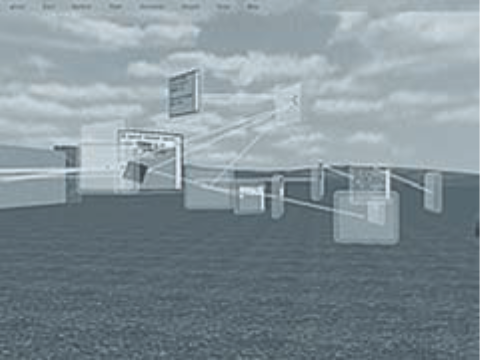Review Part III: Changing Structures
Contributing authors (by chapter)
10. Mary Leigh Morbey and Carolyn Steele
11. Tarez Samra Graban, Colin Charlton, and Jonikka Charlton
12. Chanaon Adsanatham, Phill Alexander, Kerrie Carsey, Abby Duisar, Wioleta Fedeczko, Denise Landrum-Geyer, Cynthia Lewiecki-Wilson, Heidi McKee, Kristen Moore, Gina Patterson, and Michele Polak
13. Traci Fordham and Hillory Oakes
The Point
To shift the structure of composition programs from fully textual to multimodal, there needs to be a change in the attitudes of writing faculty in how they approach and view multimodal literacy as well as a urging of composition program administrators to cultivate a program that can support multimodal instruction. The mastery of multimodal literacy is not (or not only) the knowledge of how to use digital software for multimodal communication, but in how students organize and express themselves through multimodal devices. In order words, let “techne” be the focus for discussion of multimodal composition rather than software expertise. Teachers, then, are not the “sage on the stage” as few possess the expertise to use the software expertly let alone are in a position to best judge other’s techne. Alternatively, teachers should confer to graduate teaching aides, whom may feel more comfortable than professors articulating social, multimodal communication within academia, when building multimodal coursework. Instructors should also adopt a system that allows students to facilitate instruction within class. Funding is one caveat for institutions beginning to build multimodal composition courses due to print holding supremacy over digital communication along with an institutional fear of investing in an unknown and unmastered field. Colleges considering incorporating computers within composition courses or creating multimodal courses need to communicate with other institutions currently embarking the same venture or have such courses established. In doing so, universities can enter into an open dialog explaining useful processes to build multimodal courses and exalt multimodal literacy.
The Good
The entire section recounts the experiences of writing instructors learning how to include multimodal projects within their lessons, displaying the pitfalls and successes of the process. Authors of section three take a candid approach in explaining the areas of concern of those that were learning how to incorporate multimodal projects and combat the prevailing preference of print over digital text. The terminal chapters of this section report the process of constructing multimodal courses including noting the negative aspects of the electronic composition programs. Some issues site student need for computers thus raising the financial burden on students, especially those with a low income (302). The section cohesively connects the concepts of the first two sections of the book by relating faculty prioritization of print with initial frustrations learning communication software and multimodal project development. Chapter twelve links the unprofessional use of multimodal communication (gaming) with alternative genres expanding multimodal literacy and useful for scholarly discourse (292). Section three aims to encourage writing instructors to explore the existing frameworks for multimodal course implementation and bestow digital communication a status of academic worth.
The Bad
Chapter eleven is comparatively longer than most of the chapters in the book, had a weak conclusion, and contained a few sections that were wordy and confusing. The audience of section three is assuredly composition faculty, graduate students, and administration. This section provides least amount of discourse for those that have not an expressed interest in multimodal course creation at the university level. Still, considering the target audience of this book, such a criticism holds little merit.
Chapter Recommendations
Chapter 10: Student Mastery in Metamodal Learning Environments: Moving beyond Multimodal Literacy
Chapter 11: Multivalent Composition and the Reinvention of Expertise
